Cysts
Cysts are commonly known but not always well understood. These sac-like structures can appear in various parts of the body and may be benign or malignant. They are typically filled with fluid, semi-solid material, or air. Although cysts are sometimes referred to as tumors, most are benign. However, their potential for malignancy and association with cancer often causes concern. Cysts that increase in size or develop in sensitive areas should be evaluated by a specialist.
Chose Your Topic
Get in Touch
Get professional treatments in Turkey at Lygos Clinic, offering effective, affordable treatments for a healthier and more aesthetically pleasing life.
You can contact us via WhatsApp and Instagram for a quick response.
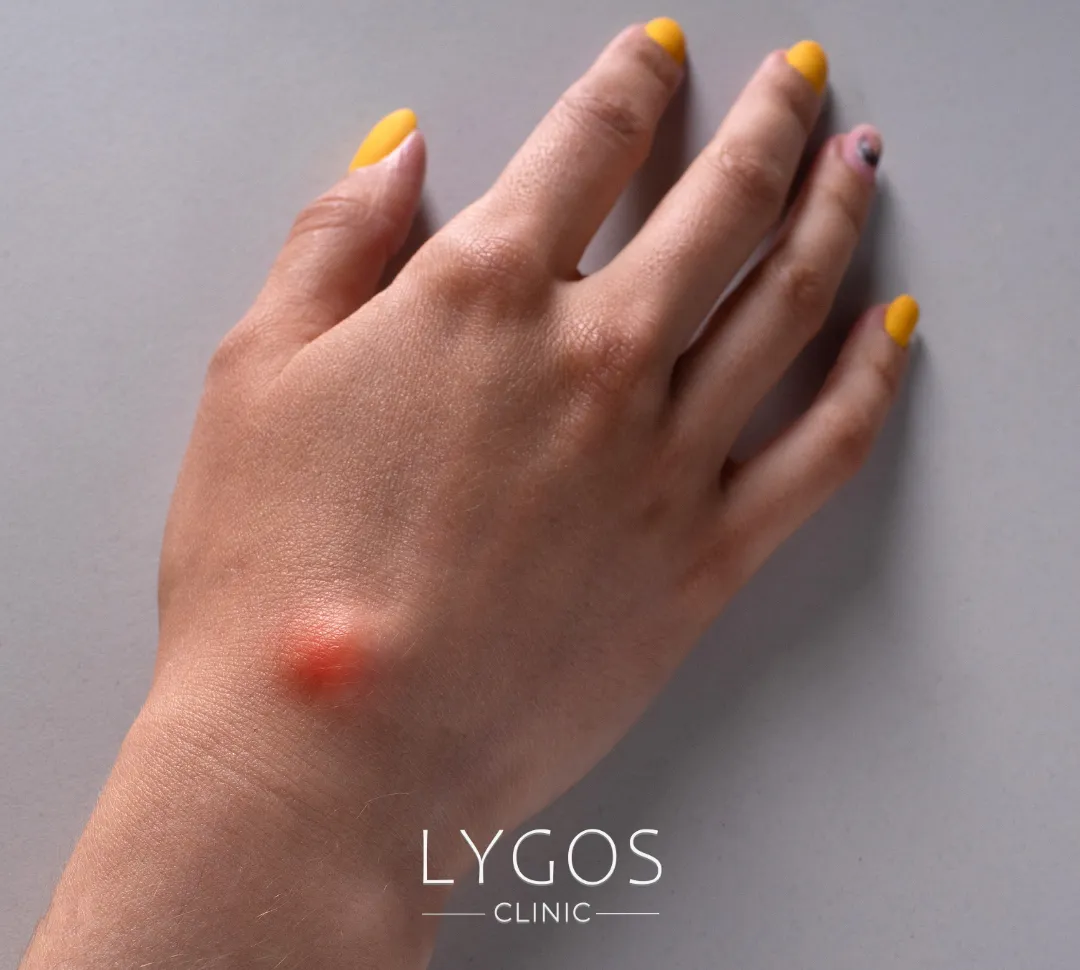
What is a Cyst?
A cyst is a bubble-like sac filled with fluid, air, or other material. Resembling a capsule, cysts can form in various tissues and organs. They may be as small as a few millimeters or significantly larger, and they can grow over time. Although often harmless, they may damage nearby tissues or organs. When filled with pus, cysts are typically referred to as abscesses.
Most cysts are benign and do not present immediate health risks unless they grow large or become painful. In such cases, surgical removal may be necessary, especially if they do not resolve on their own.
What is a Dermoid Cyst?
A dermoid cyst develops from abnormal cellular development and is formed when tissues collect beneath the skin. Typically benign, dermoid cysts can contain hair, teeth, or nerve tissue and may appear in the head, neck, or ovaries. These cysts often grow slowly and are painless, but they can cause discomfort if they press on nearby tissues.
Dermoid cysts are more common in women and are usually congenital. Symptoms include pain, swelling, or discomfort in the abdominal or pelvic region. Diagnosis involves imaging methods such as ultrasound or CT scans. Treatment usually requires surgical removal.


How is a Dermoid Cyst Diagnosed?
A dermoid cyst can often be identified during a physical exam by a specialist. For cysts located near sensitive areas such as the eyes or neck, imaging tests are essential to assess their exact location and impact on surrounding structures. Diagnostic methods include:
- Magnetic Resonance Imaging (MRI)
- Biopsy
- Ultrasonography (USG)
- Computed Tomography (CT)
Does Dermoid Cyst Recur?
Dermoid cysts typically do not recur if completely removed during surgery. However, incomplete removal may lead to recurrence. Regular follow-up is essential to monitor healing and minimize the risk of recurrence. Though generally benign, dermoid cysts can affect surrounding organs and cause complications if left untreated.


What is a Skin Cyst?
Skin cysts are closed pockets under the skin filled with fluid, pus, or other material. These cysts are often visible or palpable and typically result from blocked sweat or oil glands. Because they create an ideal environment for bacteria, skin cysts have a high risk of infection and may develop into abscesses if left untreated.
What are the Symptoms of Skin Cysts?
Closed tissues filled with fluid, fat or pus are called skin cysts. These cysts, which mostly occur under the skin, are usually felt by hand. Having a cyst that can grow can disturb patients after a while. Skin cysts, which carry a risk of infection, also directly affect the aesthetic appearance.
Therefore, it is critical that the diagnosis is made early and treatment is carried out as soon as possible. There are many symptoms for patients who have difficulty understanding whether they have skin cysts. So, what are the symptoms of skin cysts?

One of the symptoms of skin cysts is their growth. These slowly growing cysts can be tiring to monitor.
Cysts, which are usually the size of a pea under the skin, can feel like they are sliding.
Symptoms of skin cysts can also include infection. Painless cysts have a risk of causing pain if they become infected.
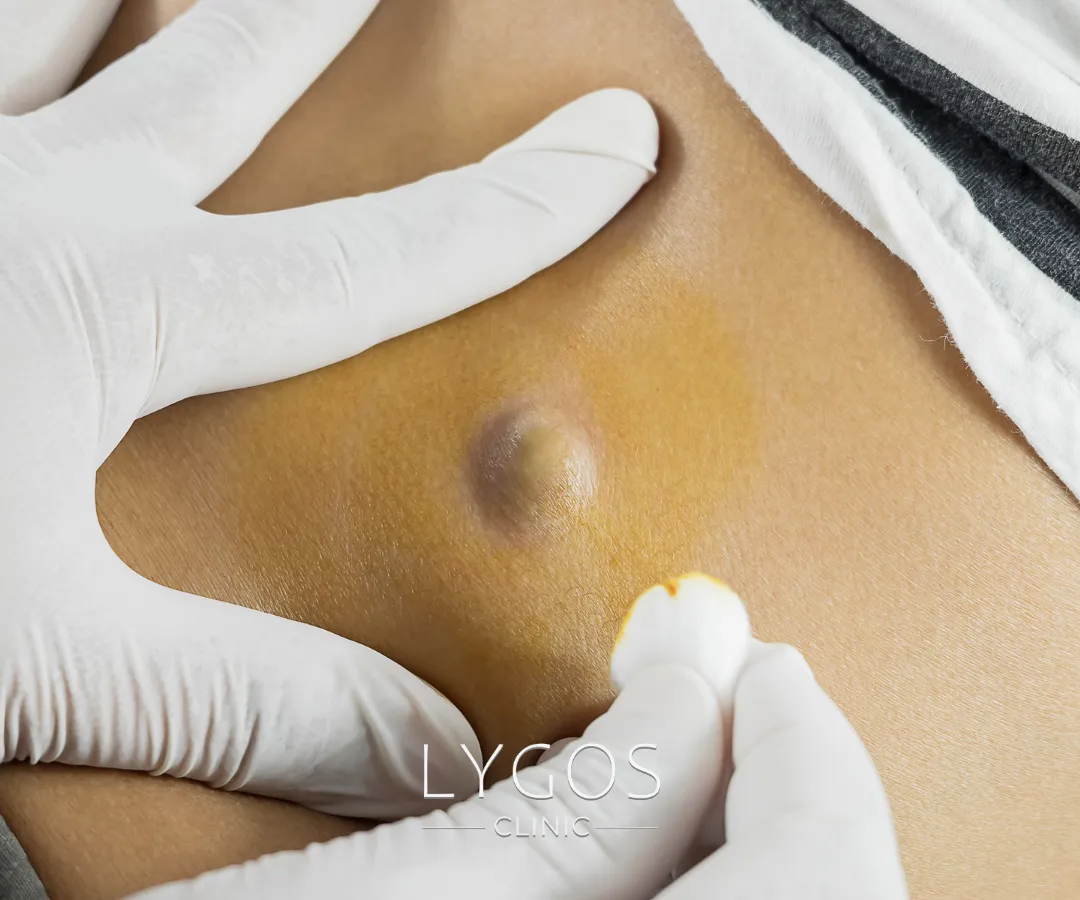
Cyst Treatment
Treatment depends on the cyst’s type, location, and severity. Benign cysts that are not growing or causing discomfort may only require monitoring. A specialist may also prescribe medication. If the cyst continues to grow, becomes painful, or shows signs of malignancy, surgical removal may be necessary.
Surgical removal is usually performed under anesthesia. After surgery, patients are monitored to ensure proper healing. Cysts in sensitive areas may be drained using a needle.
Common Types of Skin Cysts
- Epidermoid and Sebaceous Cysts: Cyst types commonly seen under the skin are called epidermoid and sebaceous cysts. These two types of cysts show whitish or skin-colored bumps that are not rough. Epidermoid cysts, which are usually benign, are more common on the shoulders, back and scalp. The keratin accumulated under the skin causes the epidermoid cyst to appear. Sebaceous cysts contain a fluid called sebum. This type of cyst occurs under the skin.
- Ovarian and Uterine Cysts: Ovarian and uterine cysts, which form on the inside of the ovary, can also occur on its surface. This type of cyst, which is filled inside, occurs due to hormonal disorders. Symptoms of ovarian and uterine cysts include delayed menstruation.
- Baker (behind the knee) cyst: Cysts caused by trauma, cartilage tear or knee joint inflammation are called baker's cysts. The baker (behind the knee) cyst, which occurs in the back of the knee bend, is filled with fluid. This cyst in the joint can grow if left untreated. It can also cause symptoms such as severe pain, redness and swelling.
- Ganglion (Wrist) Cyst: The type of cyst that occurs in the hands or joints is called ganglion (wrist) cyst. These fluid-filled cysts are usually benign. The wrist cyst, which occurs as a result of soft swelling, occurs as a result of injuries. It is more common especially on the fingers and feet.
- Breast Cysts: The formation of fluid-filled sacs in the breast is called a breast cyst. These cysts, which are usually benign, are felt as water-filled sacs. Breast cysts that occur in the breast area may harden in some cases. Cysts, which may also grow, are not defined as cancerous. Breast cysts, which can cause anxiety with their widespread occurrence, are an anechoic type. These cysts, which can also occur in other areas, show themselves as black in ultrasonography.
- Kidney Cysts: In kidney cysts that form in the surface layer or in the inner part of the organ, it is also possible to have more than one small cysts. This condition, which can be seen as polycystic kidney disease, can affect the working capacity of the organ. It may even show cancerous tendencies and need to be treated immediately.
What Causes Body Cysts?

Hormonal irregularity

Familial predisposition

Chronic infection and inflammation

Blockages in the sebaceous glands and secretory ducts

Hereditary diseases
How Causes a Cyst Form in the Body?
- Infection
- Genetic causes
- Tumors
- Cellular problems
- Clogged channels
- Parasite
- Trauma
A cyst in the body can also occur for no apparent reason. There is also a risk of another disease underlying the cyst formation.
Pilar Cyst
Pilar cysts form due to blockage in sebaceous glands on the scalp. Usually benign and round, they may vary in size and become uncomfortable if they grow. Though soft to the touch, they may be more solid than other types of cysts and are often hereditary.

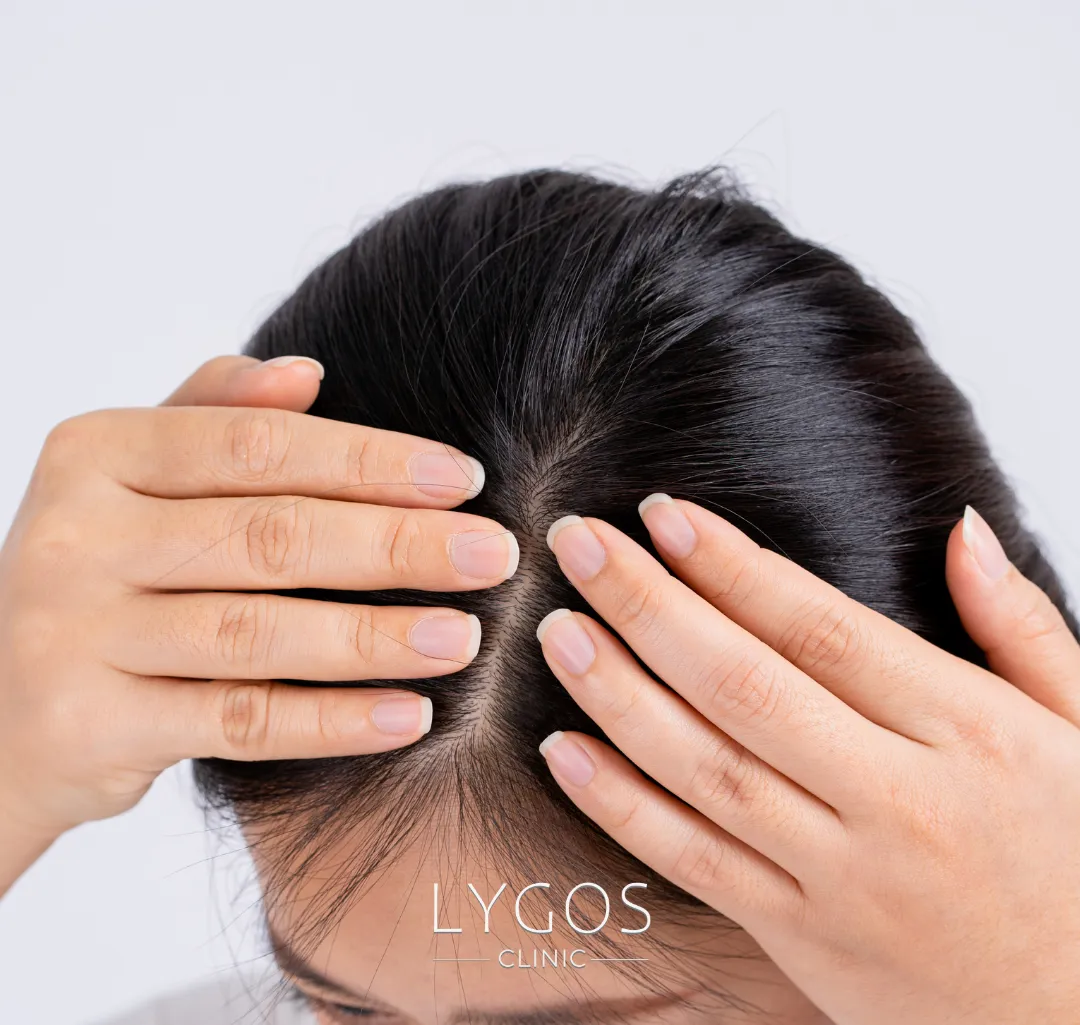
Pilar Cyst on the Scalp
These cysts, caused by blocked oil glands in the scalp, may produce an oily, dark discharge and sometimes an unpleasant odor. Though benign, their appearance and discomfort may lead individuals to seek treatment. They are more common in men and people aged 20 to 40.
Skin Cyst Before and After
Treatment significantly improves both physical comfort and cosmetic appearance. Symptoms such as infection, pain, and swelling are resolved, which can also positively impact a patient’s emotional well-being.
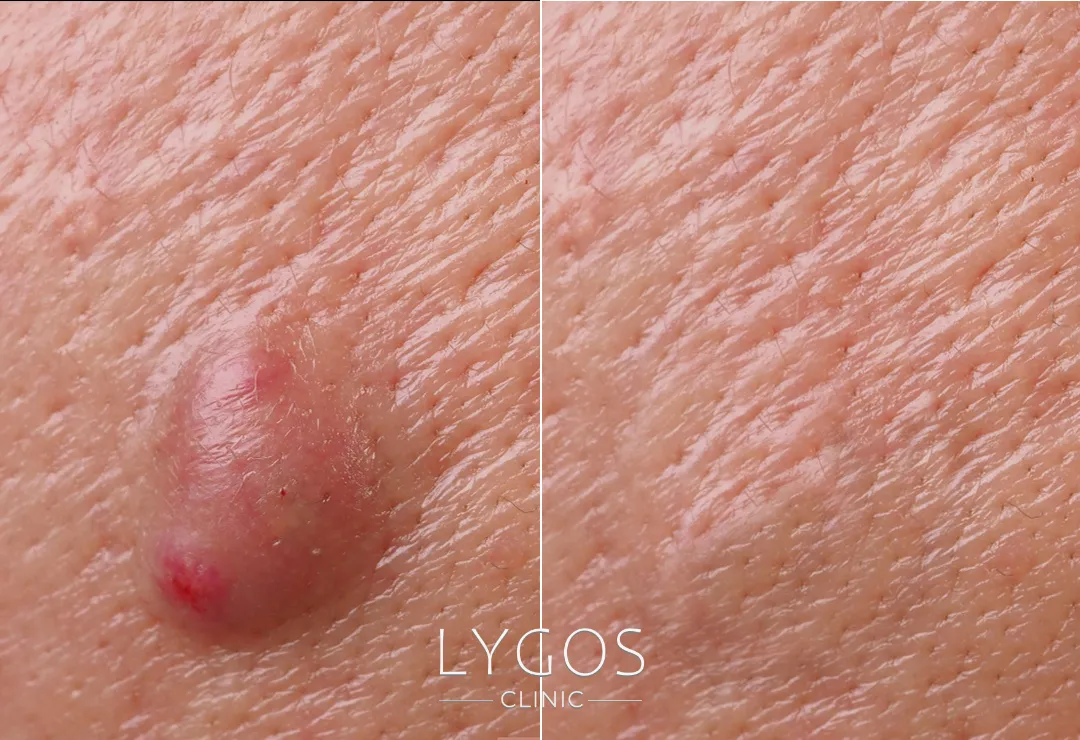

Skin Cyst Treatment Costs
Costs depend on the cyst’s size, location, and type, as well as the clinic, physician, and required procedures. Some cysts resolve naturally, but others may require surgery. For accurate pricing, patients should consult a specialist.
To receive professional support, you can contact Lygos Clinic’s expert team for detailed evaluation and personalized guidance.
Get in Touch
Get professional treatments in Turkey at Lygos Clinic, offering effective, affordable treatments for a healthier and more aesthetically pleasing life.
You can contact us via WhatsApp and Instagram for a quick response.
Frequently Asked Questions About Removal of Skin Cyst
A cyst over 8 to 10 centimeters in size or one that grows continuously can be dangerous. The patient is therefore advised to consult a specialist doctor. Cysts that are determined to be malignant by ultrasound and blood tests are removed by surgery.
BLOG

Breast Lump | Types: Benign, Malign and Causes | LYGOS 2025
Breast Lump While cancer stands out as one of the most common health problems today, early diagnosis rates are also
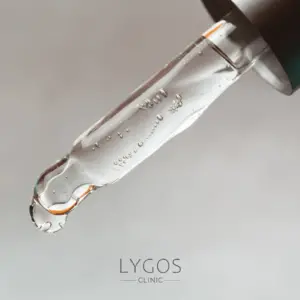
What is Salicylic Acid? | How to Use & Benefits | LYGOS 2025
Salicylic Acid Salicylic acid is a powerful ingredient that is frequently encountered in today’s skin care products and has become

Estrogen Hormone | Effects on the Female Body | LYGOS 2025
Estrogen Hormone As the human body works in harmony with nature’s marvellous balance, hormones play a vital role in this






